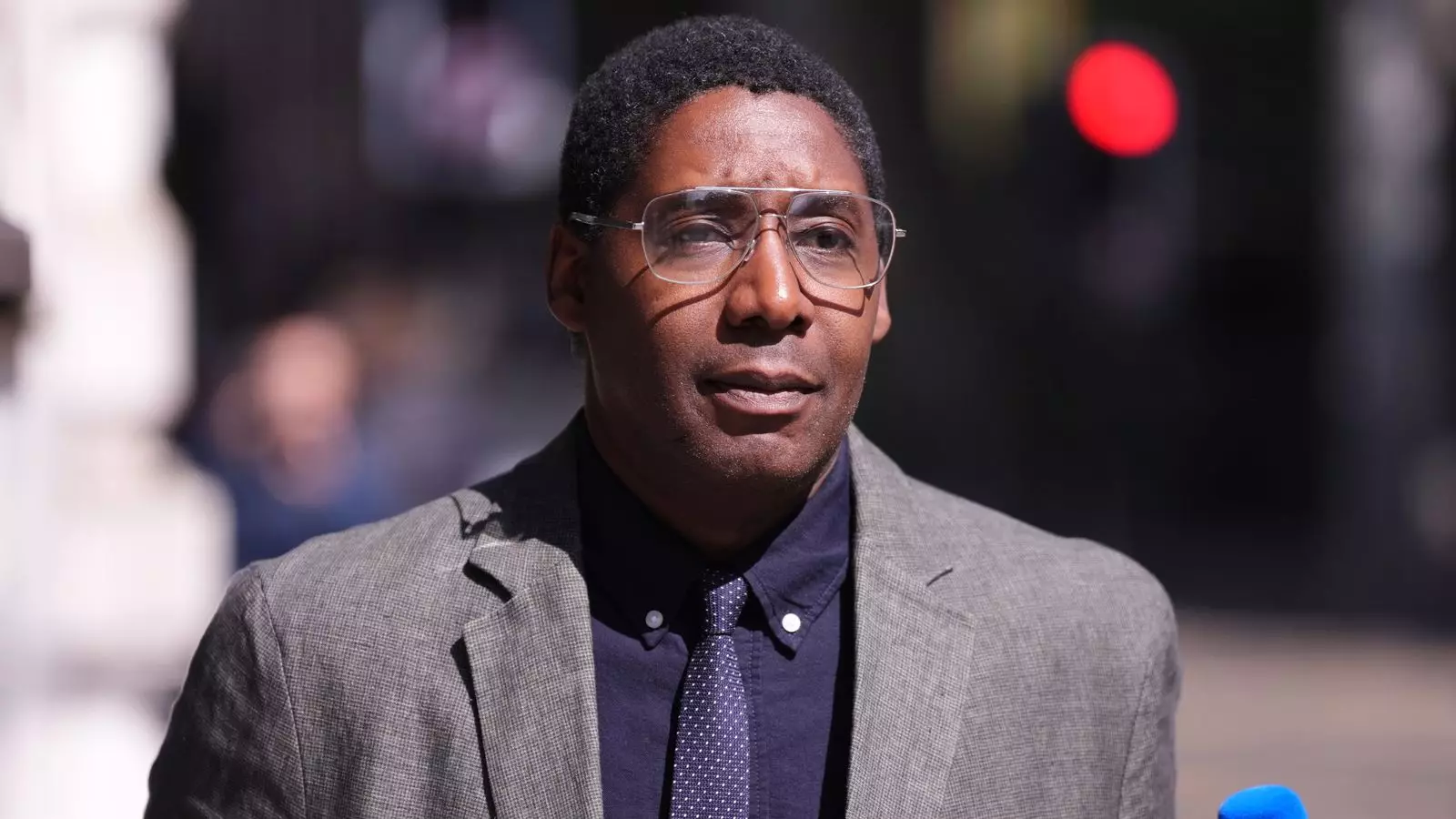The art world has long been shrouded in an air of sophistication and allure, painting its players in strokes of brilliance and creativity. However, it is also a realm where the lines between artistic expression and moral responsibility can blur catastrophically. The recent case of Oghenochuko Ojiri, an art dealer associated with popular TV shows such as *Bargain Hunt* and *Antiques Road Trip*, offers a grim insight into the darker side of this glittering industry. Ojiri’s recent sentencing to two and a half years in prison for failing to disclose the sale of artworks to a man implicated in funding Hezbollah reveals a troubling narrative of complicity, profit, and ethical ambivalence.
Ojiri, entangled in a web of upscale art transactions exceeding £140,000 over fourteen months, sold artworks to Nazem Ahmad, a Lebanese businessman identified as a significant financier for the notorious terrorist group. Through this reprehensible association, Ojiri not only strayed from moral rectitude but also actively aided a business structure that potentially fuels violence and terror. His actions, illuminated in a shaming courtroom verdict, underscore a dereliction of duty that betrays the integrity of the art business as a whole.
The Art of Evasion
At the heart of the matter lies a chilling reality: Ojiri was fully aware of Ahmad’s disreputable connections. He attempted to mask his wrongdoing with the facade of ignorance, but the evidence speaks more eloquently than his claims. After receiving news about Ahmad’s sanctions in the United States, Ojiri conveyed his apprehensions in a message to a colleague, stating that he couldn’t risk selling directly to Ahmad. Yet, the stark hypocrisy in his actions became evident as he ignored the looming moral threat in favor of financial gain, selling the artwork to Ahmad nonetheless.
The judgment by Mrs. Justice Cheema-Grubb starkly addressed Ojiri’s choices, stating, “You knew you shouldn’t be dealing with this man.” It is disheartening that a person who has achieved visibility in the arts—a field whose very essence thrives on cultural sensitivity and historical awareness—could turn a blind eye to the gravitas of his transactions. Such egregious neglect raises a complex question: How many others are out there, capitalizing on the art market’s ambiguities while sidestepping their ethical responsibilities?
The Disturbing Underbelly of the Art Market
What Ojiri’s case glaringly exposes is a systemic vulnerability within the art market. It is a domain not simply driven by aesthetics but also by the potential for laundering and illicit financing. This isn’t merely a story about one man’s downfall; it is a cautionary tale for an entire industry. The prosecution, labeled by the Metropolitan Police as the “first of its kind,” stresses the necessity for art dealers to adopt stringent ethical standards and a commitment to transparency. Art, once upon a time regarded as a pure form of human expression, now risks being manipulated as a vehicle for the financing of terror.
Prosecutor Lyndon Harris’s assertion that Ojiri knowingly obscured the reality of his clientele speaks volumes about the potential complicity in the marketplace. The fine arts sector must grapple with this unseemly truth—an ugly underbelly emerges when commercial interests override moral accountability. It begs the question: What is the cost of siesta for the art dealer—both figurative and literal?
Ethics vs. Aesthetics: The Moral Quandary
As art continues to command breathtaking prices, the intersection of ethics and aesthetics becomes an increasingly complex labyrinth. Is it permissible for those in the art world to prioritize profitability over principles? Ojiri’s choices cast a long shadow on burgeoning artists and ethical dealers who strive to maintain the integrity of their work. The art industry can no longer afford to turn a blind eye to its darker affiliations for fear of tarnishing its seasonal glamour.
In a society that increasingly demands accountability, it is pivotal that art dealers are held to higher standards, ensuring their profits do not perch on the shaky pedestal of moral ambiguity. For every exquisite piece sold, there must also be a commitment to vigilance against the forces that seek to manipulate art for nefarious aims. One man may serve as an example, but the ripple effects of his negligence reverberate throughout a fragile system—one that must now urgently recalibrate its values before it loses its soul entirely.

